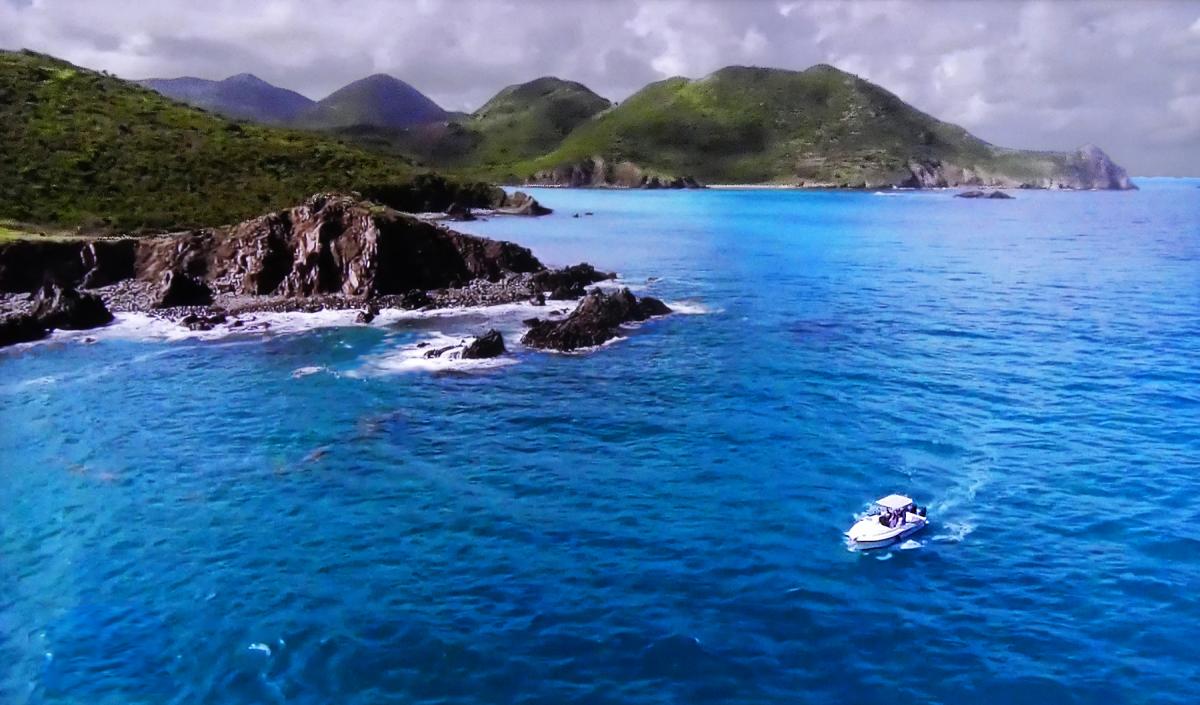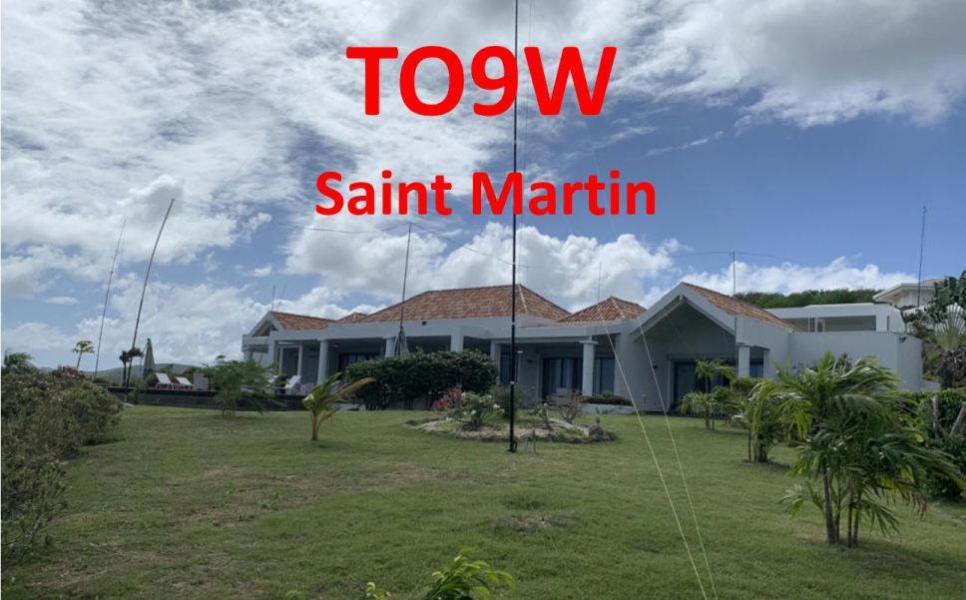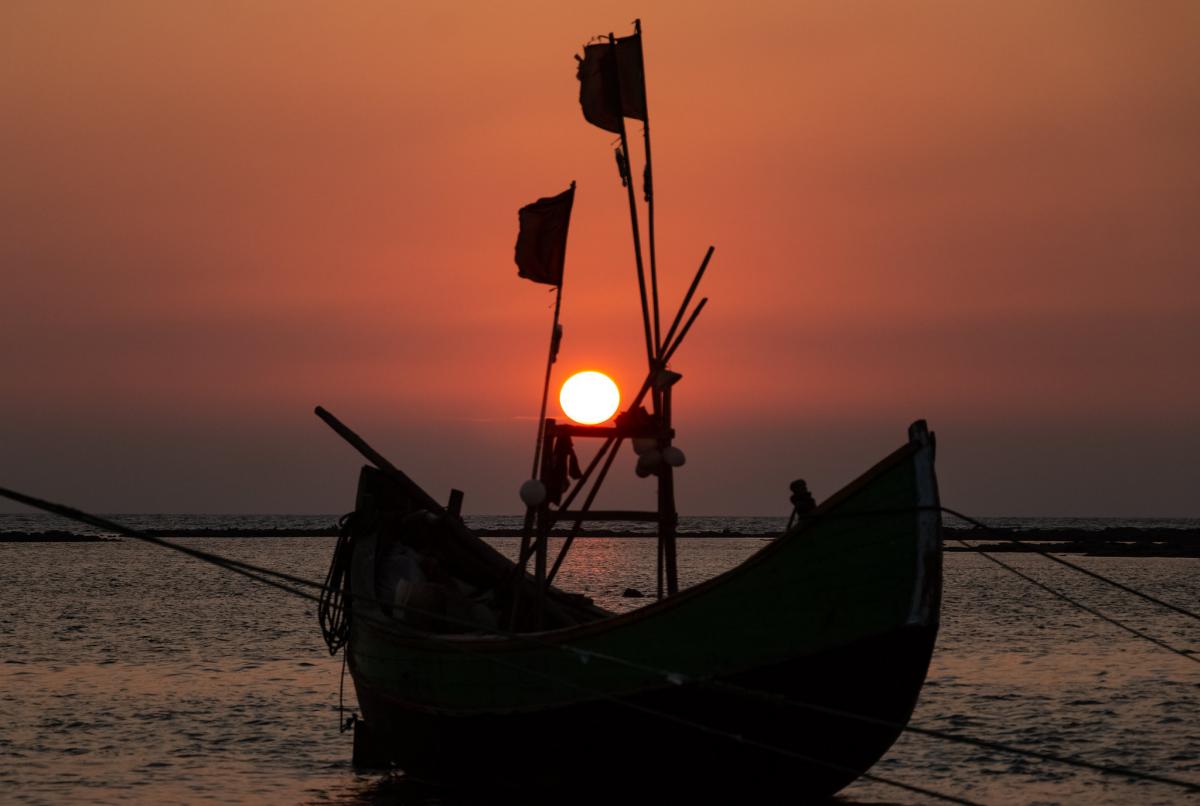TO9W Team will be active again from Saint Martin Island, IOTA NA - 105, 30 November - 12 December 2025.
Team - W9MR, W9AP, K9EL, N9LQ, K9KE.
Recent DX Spots TO9W
TO9W Log search They will operate on 160 - 6m, CW, SSB, FT8, FT4.
QSL via W9ILY, LOTW, ClubLog OQRS.
Ads for direct QSL:
JOHN R HOLMES, 3810 N CHAMLIN DR, MORRIS, IL, 60450, USA.
Saint Martin
Saint Martin, or the island of Saint Martin, is located in the northern part of the Caribbean Sea. This small island has an area of only 87 square kilometers and is the smallest inhabited piece of land in the region. The island has a population of over 75,000.

Saint Martin Island. Author - Jacques Rollet.
How it all began
Back in the 13th century, representatives of the Arawak Indian tribe settled on the island. Salt was the main natural resource of this land at that time, which is why the locals called it the Island of Salt. In 1493, Christopher Columbus' expedition landed on the islands, and in the same year, a new geographical name was added to the map of this part of the world: the island of Saint Martin. This happened on November 11, and the locals still celebrate this day as a national holiday.
In the early 17th century, the French landed on the shores of this Caribbean paradise and brought tobacco to the small country. A little later, the Dutch fleet also arrived and built Fort Amsterdam in the northern part of the island. Then, in 1633, this land came under the control of the Spanish crown, which held its position for the next 15 years. From that moment on, French and Dutch colonists returned, signing the Treaty of Concordia on the joint development of the island. Under the treaty, most of the land went to France – 53 square kilometers – while the Netherlands received only 34. This is the only place on Earth where the state borders of these two European countries directly touch each other.
 TO9W. Saint Martin Island. DX Pedition.
TO9W. Saint Martin Island. DX Pedition.
Natural resources
Saint Martin is part of the Lesser Antilles, formed after the eruption of an ancient underwater volcano. This land is rich in sandy beaches and greenery. Along the coastline, there are abundant coral reefs, complementing the already rich underwater world of the Caribbean.
The highest point in Saint Martin is Pic Paradis, which rises 420 meters above sea level. The local fauna is not particularly diverse, with birds and lizards being the main wildlife found on the island. Large animals are practically absent here.
The island is home to a large number of palm trees, cacti, and hibiscus. The locals even call it “Coconut Island” because these fruits are found here in abundance.
As for the weather, Saint Martin has a warm tropical climate – high humidity and regular trade winds balance each other out, making the islands comfortable for both locals and tourists. As a rule, most of the precipitation falls in the spring and autumn, but despite its intensity, it is fairly short-lived. In winter, the temperature stays around 28-29 degrees, and precipitation decreases significantly.
Contemporary development
Due to the fact that the island is divided between two European countries, the official currency is the euro, which is accepted in all local shops and hotels. The US dollar is also widely used by both locals and tourists.
Saint Martin also has two official languages: French and Dutch. In addition, many islanders speak Spanish and English.
The part of the island that belongs to the Netherlands is an offshore zone and is popular with European and American companies. If a company is registered in Saint Martin but does not conduct business on the island, it is exempt from paying taxes to the local treasury. In general, tax legislation is very favorable to residents; for example, there is no property tax or tax on income from the sale of real estate on the island.
In terms of living standards, Saint Martin is close to large cities in Western Europe, with prices in stores only slightly higher due to the region's remoteness. Cashless payments using plastic cards are widespread.
The island is connected to the rest of the world by air. Saint Martin has the largest airport in the Caribbean, which was opened during World War II and named after Dutch Princess Juliana. This airport is one of the ten most dangerous in the world, as the runway is just over 2 kilometers long and planes have to maneuver directly over the heads of sunbathing tourists.
 Saint Martin Island. Author - Arnab Bala.
Saint Martin Island. Author - Arnab Bala.
What to see
Both parts of the island are open to tourists, and there are no border controls between the French and Dutch zones. Most of the buildings here are striking examples of early colonial architecture—the light-colored facades and red roofs of the houses have become the hallmark of Philipsburg, the largest settlement on the Dutch side of the island. Here, tourists can visit the local museum, which houses ancient finds dating back to the 5th-10th centuries AD, as well as artifacts from sunken ships. Also, be sure to visit the small zoo and botanical garden—the local flora and fauna are not particularly diverse, so you will mainly have to pay to see exotic plants and animals.
Among the natural attractions, one cannot fail to mention the island's magnificent beaches, which stand out for their natural beauty. Dawn Beach, the pride of the local residents, is particularly noteworthy.
St. Maarten also has preserved military buildings from the colonial era, one of which is the French fort Fort Louis. Its walls offer a magnificent view of the coast.
The island also has a unique butterfly farm. Here you can see hundreds of species of these graceful insects.
Hotels and tourism
The main source of income for Saint Martin's economy comes from tourists who visit this wonderful island all year round. Travelers can enjoy a huge selection of activities, including surfing, diving, tennis courts, horseback riding, and safaris in the local jungle. And, of course, one cannot forget about more peaceful and tranquil types of recreation—the island is famous for its sandy beaches, and there are also several golf clubs on Saint Martin.
There are many different hotels available for tourists on the island. You can also rent a small apartment or house near the sea, which will cost from $200 per day, which is quite affordable by local standards, especially during the tourist season, which begins in December.
St. Maarten is a duty-free zone, so the island is famous as a real paradise for shopaholics. A huge selection of perfumes, jewelry, electronics, and much more can be purchased at local duty-free shops at significant discounts. In the Dutch part of the island, there is even an entire street called Front Street, which is dedicated to shops selling leading global clothing and footwear brands.

